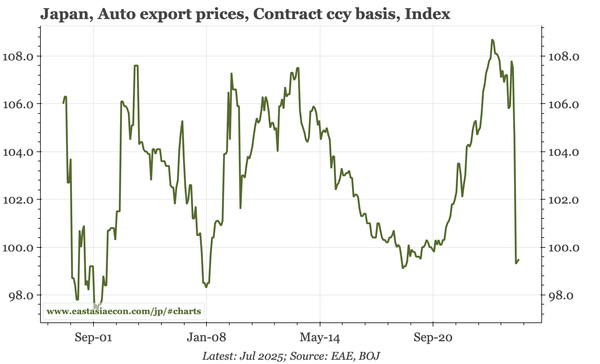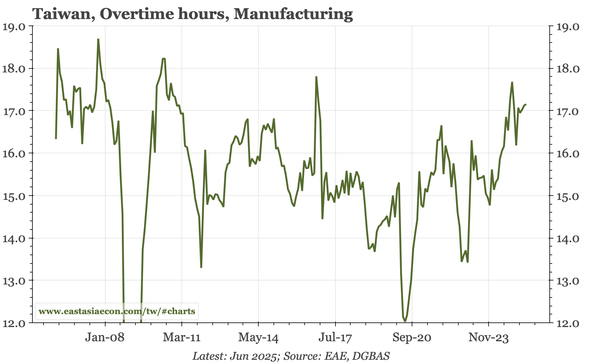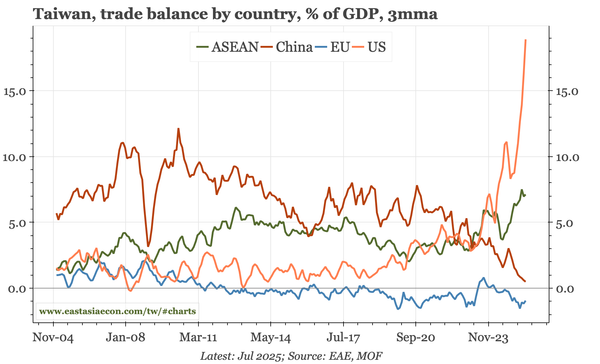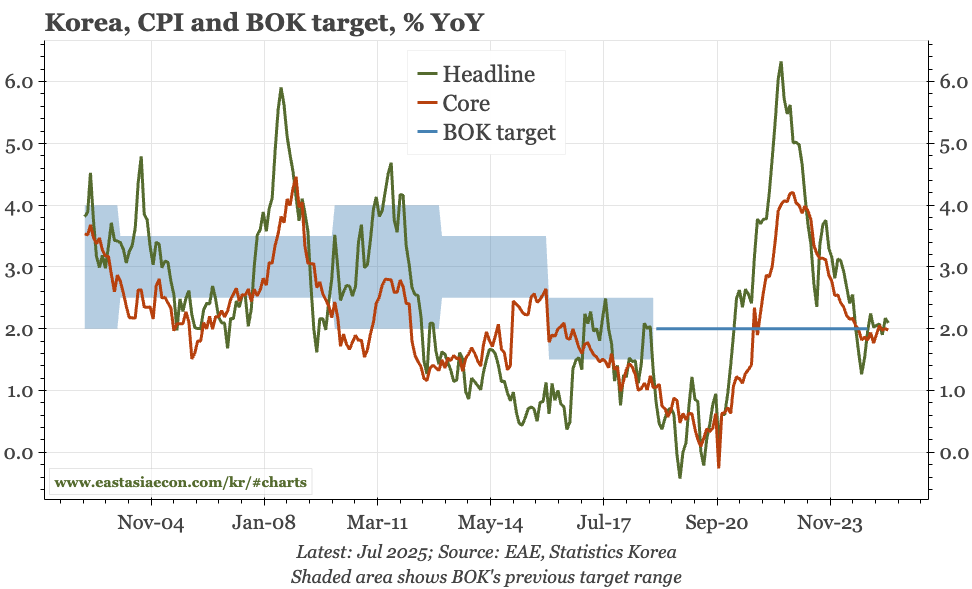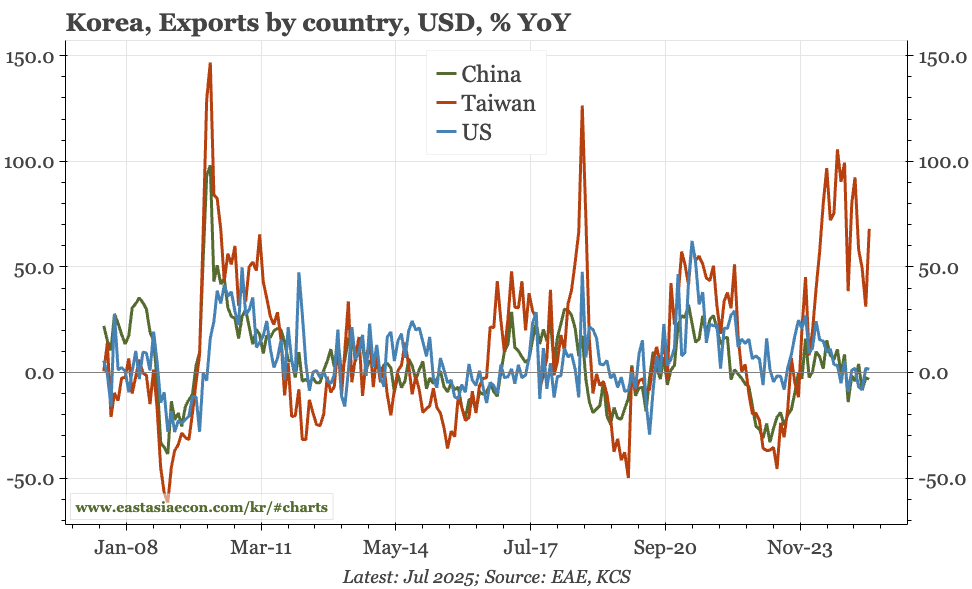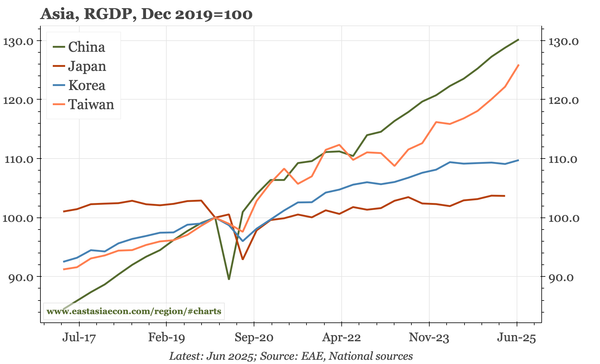East Asia Today

Today's main releases were in Korea, with trade data for the first 20 days of August, and July PPI. S&P released the flash August PMI for Japan. Also, some charts on foreign trade and monetary data in China from the detailed releases that follow the headline data published earlier in the month.
East Asia Today

Korea's Q2 household debt release is important, given it is such an important issue for BOK thinking about monetary policy in the short-term, and the economy in the longer-term. The structural issues facing Korea are nicely analysed in a BOK report looking at the similarities with Japan.
East Asia Today

No major releases today, but a few bits and pieces from China: the falls in interest rates and shifts in loan structure shown in the PBC's Friday monetary policy report; the re-acceleration in auto exports in today's detailed trade data; and signs of capital inflows in Friday's settlement data.
East Asia Today

Many updates today. In China, property prices and the outlook for CPI, as well as the official activity data for July. The overall tone remains weak. By contrast, the first estimate of Q2 GDP data for Japan was solid. And detailed Q2 data for Taiwan, together with 2H25 forecasts, were more bullish.
East Asia Today
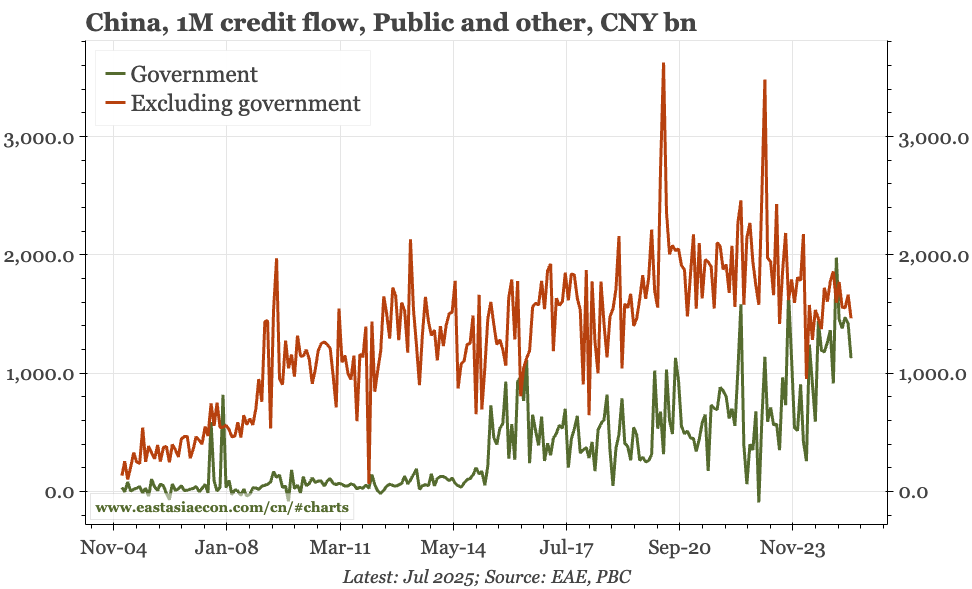
Price data for Korea's foreign trade shows the same trends as for Japan: import prices falling YOY, and auto export prices dropping MoM. Also, China's monetary and credit data from yesterday. The rise in the credit impulse lost momentum, but stabilisation in the M1:M2 ratio is holding.
East Asia Today
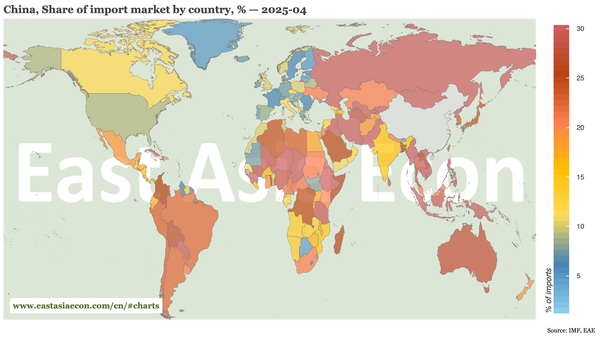
There were no data releases today. So instead, an app showing changes in China's global market share; a recap of regional exports, where the standout isn't China but rather Taiwan; and the big shifts in the direction of Taiwan's trade, with surging exports to the US, and surging imports from Korea.
East Asia Today
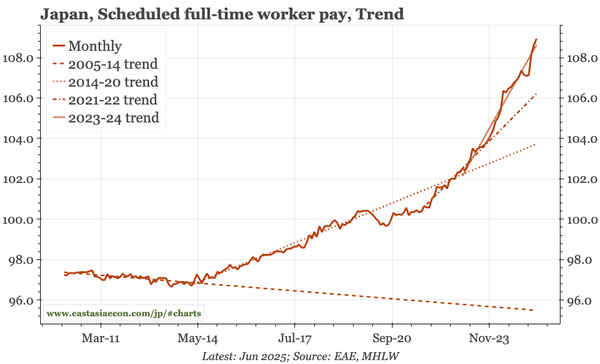
Until this year, there'd been similarities in post-pandemic inflation dynamics between Japan and Taiwan. Now, differences are emerging. In Japan, wage growth, already, firm, has reaccelerated. In Taiwan, the main dynamic is the sharp rise in the TWD is pushing the prices of tradeables down.
East Asia Today
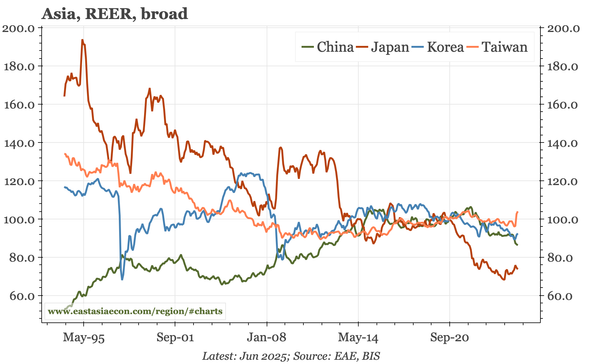
With no major data releases today, my focus has been the cheapness of the real CNY. That is interesting in part because of the comparison with Japan in the 1990s, so today's update includes some charts on China now versus Japan then, and others on currencies and inflation in the region today.
East Asia Today

In Korea, we've had the BOK minutes (published yesterday), and June JOLTS data. In Japan, the only releases have been 10D trade data for July and June Toyota sales. China's July Politburo was also released. That doesn't look to contain surprises, but I'll be going through it later.
Taiwan – further softening of LIs
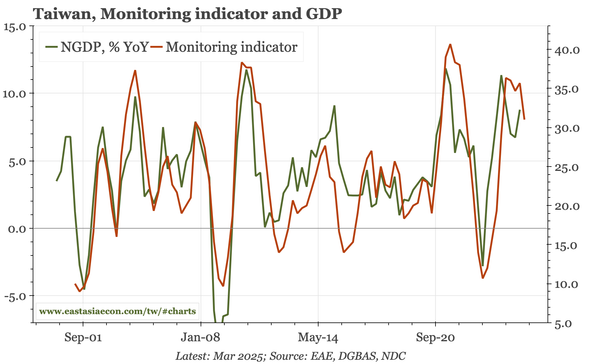
The clear conclusion from the official leading indicators is that the cycle has peaked. However, given that exports always had to slow from the absolute surge in 1H25, that isn't news. The difficulty in 2H25 will be differentiating normalisation after that surge from a real cycle deterioration.
China – little relief from deflation
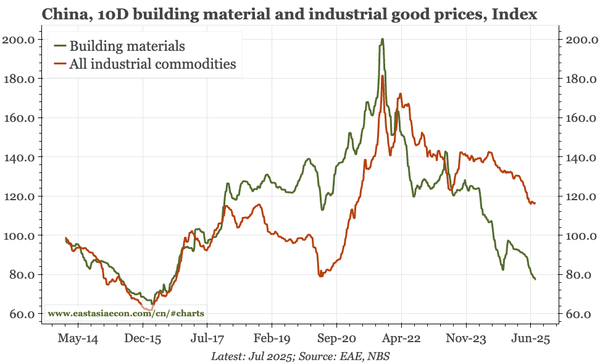
Data through July show upstream industrial prices have stopped falling. That should mean PPI deflation doesn't worsen further. However, underlying demand remains weak, with building material prices continuing to fall. And soft wholesale food prices suggest there's no pick-up in CPI either.
Japan – services still strong

Japan's post-covid cycle has had two clear features. First, the strength of services and non-manufacturing. Second, inflation. Today's flash PMI shows both those trends persisting. Sentiment fell in manufacturing, but improved in services, while input price inflation remained "sharp".
Taiwan – IP and exports outweigh everything

IP dipped in June, but is still 40% above the trough of 2023, 100% higher than 6M ago, and dwarfs the cycle in Korea. The surge in IP/exports has supported the domestic economy when consumption has been weakening. The cycle thus remains unusually desynchronised, as it has been since the pandemic.
Korea – exports ok in July

While easing in the first 20 days of July, exports didn't fully reverse the June bump. In the circumstances, that's not bad, though only semi shows any real momentum, and it seems unlikely anything else turns up given tariffs. Exporter sentiment in this week's business survey will tell us more.
China – auto exports regain momentum
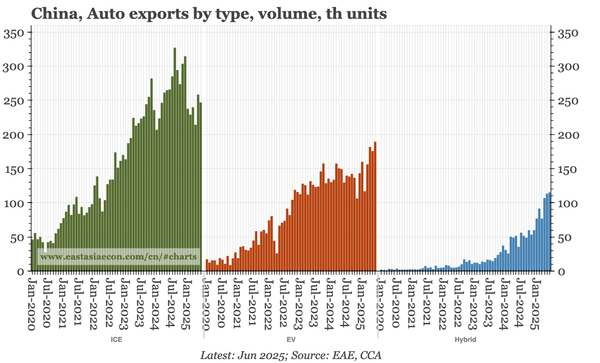
The rise in exports and the trade surplus clearly isn't just about autos: there's now a large surplus in all major mfg categories. Auto exports in fact went sideways in 2023-24 as the initial rise driven by ICE shipments lost momentum. But there are now signs of a second wind, due to EVs and hybrids




